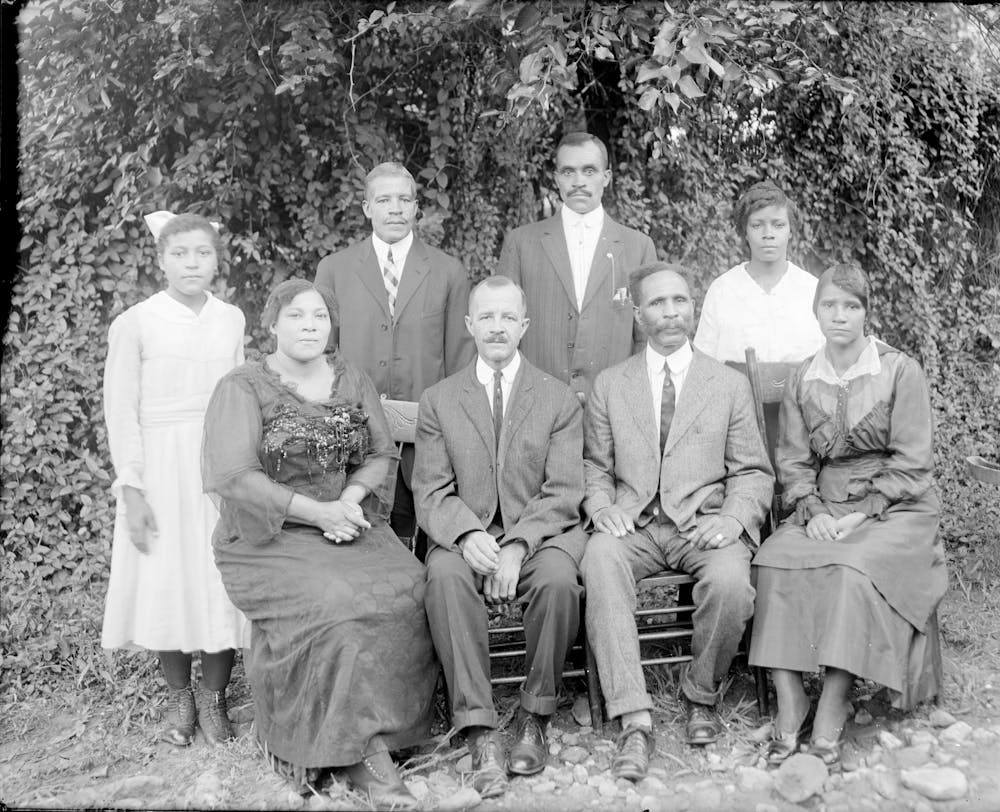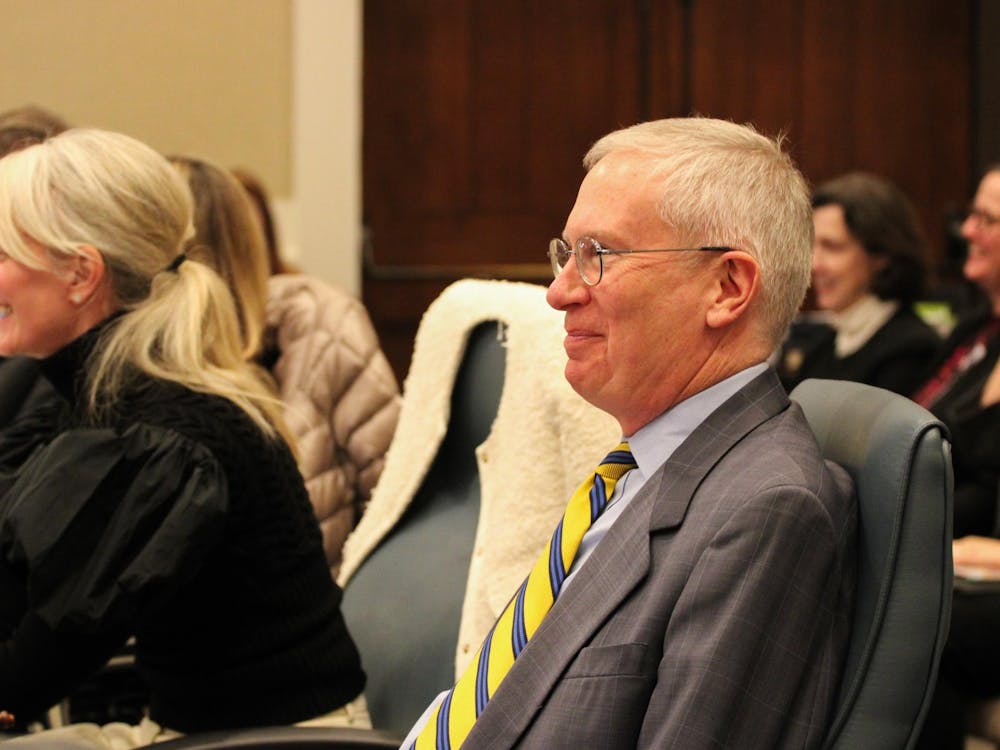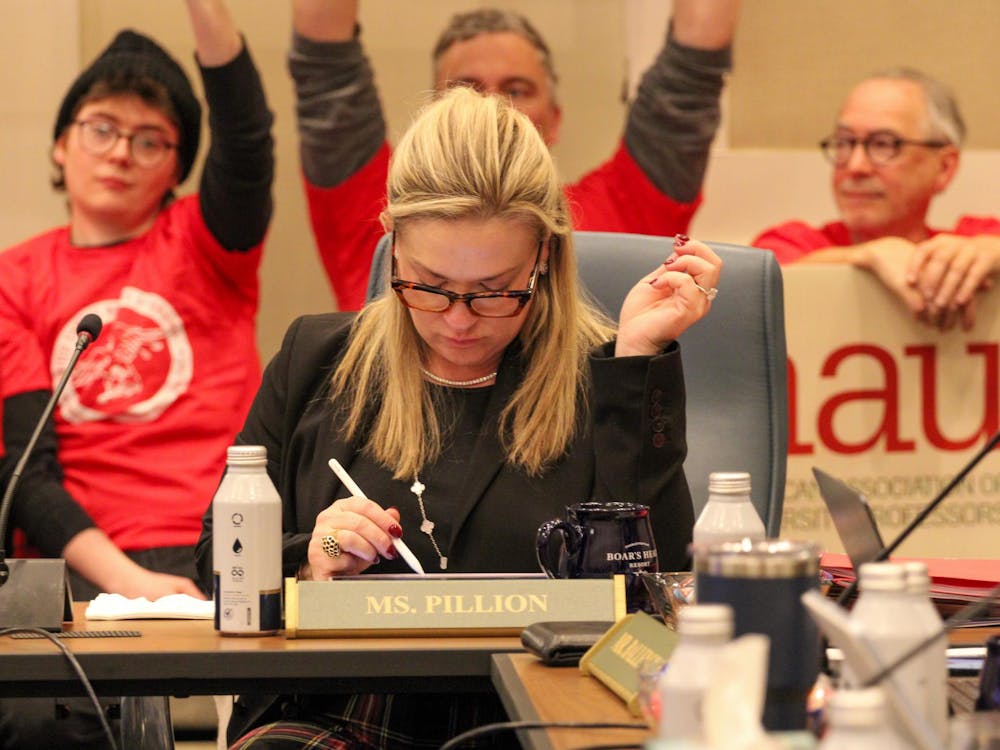Nestled among 16 million other objects in the Albert and Shirley Small Special Collections Library — including archival records, rare books and maps — are over 9,000 glass plate negatives taken by photographer Rufus W. Holsinger between the year 1912 and the start of World War I. Around 500 of these photographs are of Black Charlottesville residents — and for the first time, a group of individuals from across the University are blowing the dust off the slides and bringing them into the light.
While Holsinger’s portraits of Charlottesville and Central Virginia landscapes or white Virginians can be seen throughout the City, the hundreds of portraits of Black Virginians have never been publicly exhibited or displayed as a cohesive unit.
Now, dedicated individuals from the University of Virginia Library, the Institute for Advanced Technology in the Humanities, the University’s Corcoran Department of History and the Jefferson School African American Heritage Center are working collaboratively to present these portraits to the greater Charlottesville community. The group will also enlist the help of student researchers and local partners to complete the feat.
The project’s goals of making the portraits publicly accessible is bolstered by a recent $73,000 grant from the Jefferson Trust, which grants money to ideas and projects that enrich the University. This year, the Jefferson Trust funded 14 projects, totaling nearly $1.35 million in funding.
History Prof. John Edwin Mason said he stumbled across the portrait collection in 2014 through Virgo, the University Library’s digitized collection platform, and was immediately struck by the figures. A historian by trade, Mason immediately began to question why Black Charlottesville residents spent time having their portraits taken at the height of the Jim Crow era.
“Some of these portraits are just astonishingly beautiful and all of them are compelling,” Mason said. “You wonder ‘Who are these people and why did they take such care to go to the studio and present themselves to the camera in very self-conscious, thoughtful ways?’”
The portraits were a once-in-a-lifetime opportunity for many Black residents. Costing up to $15 or $20 in today’s dollars, Mason said obtaining a portrait was a cumbersome task for primarily poor Black residents at the time. The mass of individuals, families and couples who went to such lengths to obtain a physical record of their existence despite the cost, according to Mason, thus demonstrates the value African Americans placed on countering the racist stereotypes pervasive in mainstream American visual culture at that time.
Between 1912 and 1914, Charlottesville was dominated by racial segregation. The early 20th century marked the height of the Jim Crow era, during which elaborate, racialized laws enforced strict segregation. In this period, white Charlottesville residents constituted the Ku Klux Klan in the City with a moonlight ceremony at Thomas Jefferson’s grave and others successfully campaigned for the erection of statues to Confederate giants such as Robert E. Lee and Thomas “Stonewall” Jackson.
Yet, Mason noted, these portraits vividly reveal the conscious effort African American residents made in crafting their own narratives — ones of love, fashion and loyalty.
“The visuals that people got of African Americans were grotesque caricatures and what African Americans were doing by individuals, couples and families — they were creating this alternative archive where they were implicitly saying ‘We are not who you think we are,’” Mason said. “‘We are people of dignity and style and fashion, we love our families, we have romantic loves, we run our businesses, we honor our elders, we build our churches.’”
Similarly to Mason, Worthy Martin, acting director at the Institute for Advanced Technology in the Humanities, emphasized the gravity of the portraits at the time, something modern-day citizens may take for granted in the age of social media and the current ease of documenting daily life.
“Those images are clearly people coming to a white photographer and hiring him to take their picture, and these pictures really stood for an enormous amount,” Martin said. “They didn’t have Facebook, they didn't have Instagram — a photograph on the mantle was a major way of communicating about the person.”
As the multiple portrait exhibits are curated, Martin will lead a group in undertaking humanities-based scholarship focused on uncovering the personal narratives of subjects in the photographs.
Holly Robertson, curator of exhibitions at University’s Library, noted the benefits of preserving materials, no matter the contemporary importance — these sorts of archives allow for researchers and interested community members glimpses into the past through physical objects that remain.
“The beautiful thing about material culture and records is that they’re more difficult to suppress, and that’s the whole reason that we have libraries and archives,” Robertson said. “To keep, retain, manage [and] steward these records.”
Students research assistants and researchers at the Institute for Advanced Technology in the Humanities have already begun analyzing individual photographs, poring over maps and documentation from the Jim Crow era and crafting biographical sketches of portrait subjects when possible. Once enough information on the subjects is discovered, Martin will lead the project in creating a webpage to make all of the information publicly accessible with further contextualization. With community accessibility as a cornerstone of the effort, the webpage will be coupled with freely distributed brochures and exhibition catalogs.
“We want a website more oriented to the people and to the social context of these images and that will come out as a socially accessible website,” Martin said.
Funding from the Jefferson Trust will allow for the realization of the project’s other goals, including a year-long exhibition in the Main Gallery of the Small Special Collections Library from September 2022 until May 2023 and a community engagement program bringing components of the exhibition into local schools, churches and community centers.
Andrea Seese, assistant director of promotions and events at the Jefferson Trust, said this year’s grant application pool was one of the most competitive in recent years. High dollar requests, the quality of the proposals and creativity in creating solutions or improvements for the University or Charlottesville communities made all of this year’s grantees stand out.
Seese said the trustees were highly impressed with the Holsinger Portrait Project, cognizant of the impact it could have by revealing a bit of Charlottesville history to the community that otherwise may have been forgotten.
“The project provides an opportunity to share positive stories and history and conduct further research on citizens of the local Black community that are still not being shared,” Seese said.
While still holding in tension “painful histories of slavery and segregation and the long and dark shadows they still cast,” the project will offer viewers the change to experience the fullness and beauty African Americans cultivated for themselves, according to the grant proposal.
“It’s not just the history of Charlottesville, it’s a proud demonstration of Black lives in Charlottesville,” Robertson said. “These portraits are so proud and dignified.”
Ultimately, Mason says the project seeks to tell the history of portrait subjects, publicly acknowledging for time immemorial the humanity, agency and fullness of those thus far unacknowledged but who will soon come into the light.
“These portraits are a way into this history, but they’re a way into this history that starts with beauty, that starts with style, that starts with fashion, that starts with respectability, that starts with family, churches and business enterprises,” Mason said. “We’re not starting with oppression, we’re starting with the lives and communities and institutions that African Americans created despite the oppression.”







